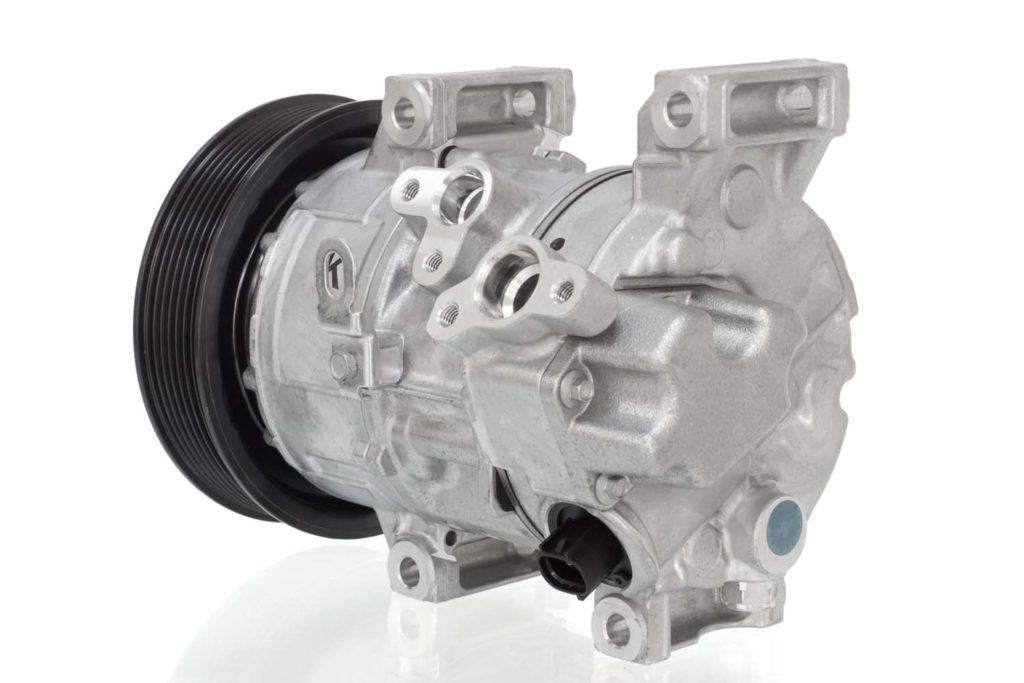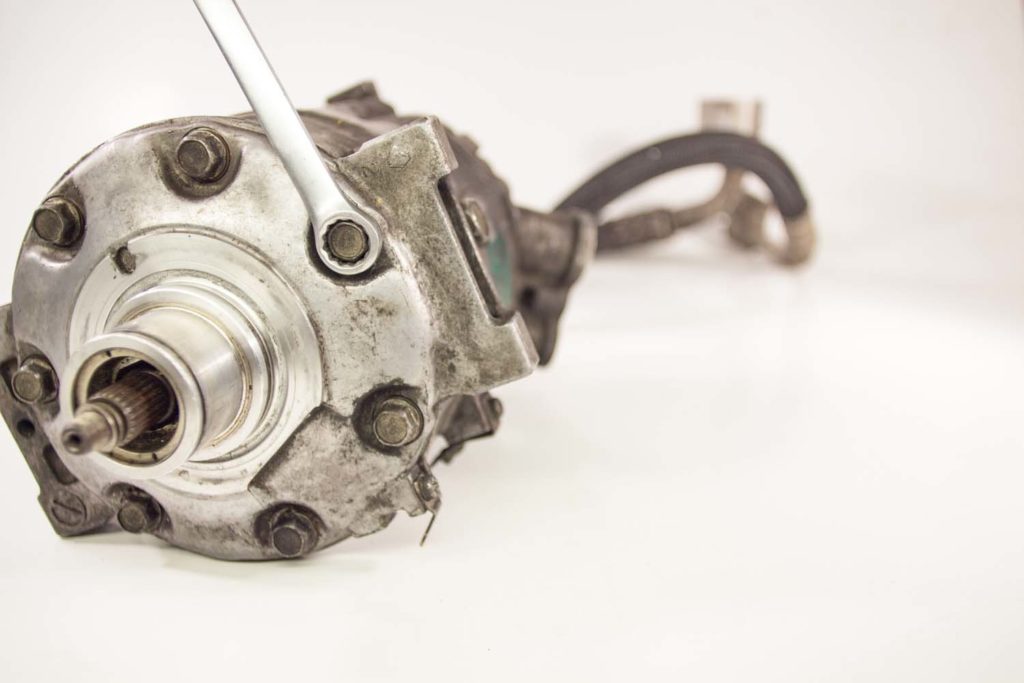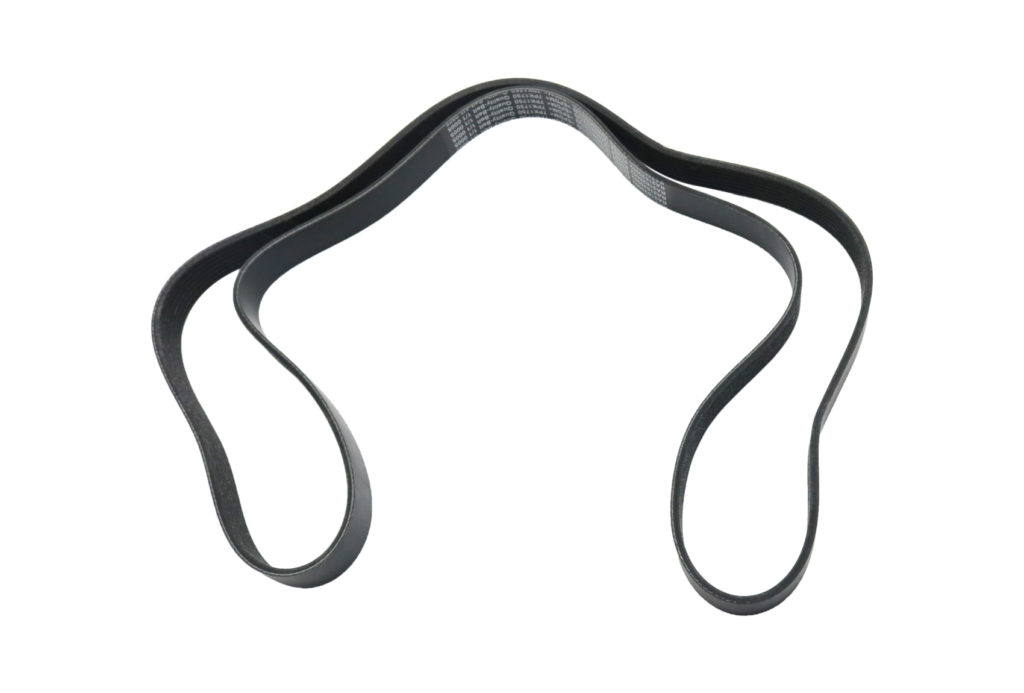The compressor is the heart of your car’s air conditioning (A/C) system. When the engine is running with the A/C on, the belt-driven compressor increases the pressure of the A/C system’s refrigerant. At the same time, the compressor forces the refrigerant to circulate through the A/C system.
If the compressor fails, it can cause several noticeable symptoms, one of which is an A/C system that blows nothing but hot air. You’ll want to address the issue right away—especially if it’s hot outside.
How Does a Car’s A/C Compressor Work?
A/C compressor operation is fairly straightforward. At the end of the compressor’s shaft, there’s a pulley that is driven by the engine’s drive belt. With a traditional compressor, when the A/C is turned on, a magnetic clutch and coil connect the compressor to the pulley so that the compressor is driven by the belt.

Traditional compressors are also referred to as positive-displacement compressors because they move the same amount of refrigerant with each revolution. A traditional compressor contains one or more pistons that compress and displace the vapor refrigerant.
There are also some modern vehicles that have what’s referred to as a variable displacement compressor. With this design, the compressor uses an internal swashplate to vary the stroke of the piston(s), thereby changing the amount of refrigerant displaced.
Variable displacement compressors do not have a clutch. Instead, this type of compressor is continuously driven by the engine’s drive belt. An on-board computer (control module) determines the operation of the compressor based on input from various sensors.
How to Tell If a Car’s A/C Compressor Is Bad: 5 Common Symptoms
Do you think you might be dealing with a faulty A/C Compressor? If your vehicle is exhibiting one or more of the following symptoms, you might be correct.

Note: Because other problems can present the same symptoms as a faulty compressor, you’ll want to perform a thorough diagnosis before condemning the compressor.
Air Conditioning Doesn’t Work
One of the most common signs of a faulty compressor is an inoperative A/C system. If nothing but warm air is coming out of the vents when the A/C is turned on, the compressor may be to blame.
Drive Belt is Damaged or Screeching
The compressor may lock up when it fails internally. When that happens, the pulley will refuse to turn when the A/C is switched on. As a result, the drive belt may make a screeching noise or become damaged as it tries to turn the locked-up compressor.

Abnormal Noises With the A/C Engaged
When the compressor is beginning to fail, it may make a rattling or knocking noise whenever the A/C is switched on.
Refrigerant Leaks
The compressor’s o-rings and seals may develop refrigerant leaks over time. Because refrigerant is colorless and odorless, you may not notice a leak unless the A/C system has dye in it (or there’s refrigerant oil build-up). A professional technician will typically use a UV light and glasses to pinpoint a refrigerant leak.
Contamination to the A/C system

If the compressor comes apart internally, it will likely contaminate the rest of the A/C system with metal debris. The debris isn’t visible unless you open up the A/C system.
How to Diagnose a Bad A/C Compressor in a Car (Positive Displacement Design)
Most professionals use a pair of manifold gauges to diagnose A/C system performance problems. One gauge connects to the A/C system’s low-pressure service port, and the other connects to the high-pressure service port. The gauge readings can be compared to pressure specifications from an A/C performance chart.
If the low and high side pressures are both higher than normal with the engine running, there could be a problem with the compressor. Higher than normal low side readings and lower than normal high side readings can also point to a compressor problem.
Of course, if the compressor is seized or its clutch is not engaging, the system pressures will never rise above the static (engine off) pressure readings. One easy way to tell whether the compressor is seized is to try to turn the compressor clutch, which is attached to the compressor shaft, by hand (you do NOT need to remove the drive belt to do this). If the compressor is hard to turn or does not turn at all, the compressor has failed internally.

If the clutch does not engage, you’ll first want to be sure that it’s receiving electrical power. Anything from a low refrigerant level—that triggers the low-pressure cutout switch—to a faulty relay could prevent power from getting to the clutch. You can use a test light to ensure there’s power at the clutch. If power is indeed present, but the clutch does not engage, suspect a faulty clutch.
It’s also possible for the air gap between the clutch and pulley to be excessive, resulting in a clutch that slips or doesn’t engage the compressor. Clutch gap can usually be checked with a feeler gauge and adjusted using shims.

Can a Car’s A/C Compressor Be Fixed?
While there are companies that specialize in overhauling A/C compressors, the practice is rather uncommon. Very few repair shops will attempt to rebuild a compressor—replacement is usually the only option.
How Much Does it Cost to Replace a Car’s A/C Compressor?
Replacing an A/C compressor isn’t cheap. If you choose to have a professional do the job, you can usually expect to pay somewhere between $800 and $1,500 to get the job done. Of course, the exact cost will depend on various factors, such as the year, make, and model of your vehicle.
Some A/C compressors for vehicles only cost around $100. However, some A/C compressors can cost upwards of $2,000.
You can save money by replacing the compressor yourself if you have the tools and the know-how. Doing it yourself will be cheaper because you’ll only need to spend on refrigerant and parts. CarParts.com has a wide variety of replacement compressors available for various makes and models.

But remember: You’ll need to evacuate the A/C system before removing the compressor and recharge the system after replacement. You can ask a professional repair shop to evacuate and recharge the system for you with dedicated equipment. A professional A/C recharge typically costs around $150 to $300, depending on your vehicle’s make and model.
Another thing to keep in mind is that experts generally recommend replacing the receiver drier or accumulator, along with the expansion valve or orifice tube, whenever the compressor is replaced. A receiver drier and expansion valve cost around 20$ each.
How Long Does It Take To Replace a Car’s A/C Compressor?
Exactly how long it takes to replace a compressor will depend on the year, make, and model of the vehicle. Usually, replacing a compressor takes an hour or two, with additional time required to evacuate and recharge the A/C system.
Where to Get a New A/C Compressor for Your Vehicle
You’re in for an uncomfortable ride when you leave your damaged A/C compressor unaddressed. Aside from enduring hot or cold temperatures inside the cabin, you’ll also be dealing with frustrating noises under the hood. So why not get an A/C compressor the easy way with CarParts.com?
We’ve made it convenient for drivers like you to find the right part for your ride every time. Use our vehicle selector to narrow down the search results to compatible A/C compressors for your daily driver, or call us using our toll-free hotline to place your order.
Shipping has never been this fast, either. We have strategically placed warehouses across the US, so we can deliver your A/C compressor in as fast as two business days. All our products come with a low-price guarantee to help you save on repairs.
Get back on the road feeling refreshed and ready to embark on an adventure with your vehicle when you order a replacement A/C compressor from CarParts.com today.
Any information provided on this Website is for informational purposes only and is not intended to replace consultation with a professional mechanic. The accuracy and timeliness of the information may change from the time of publication.


























